The king cheetah is a rare and beautiful creature that has many unique features setting it apart from other cheetahs.
King cheetahs are one of the rarest cats in Africa due to their unusual fur pattern. But they’re not a separate species. These cheetahs exhibit a rare, recessive gene producing the distinctive pattern that makes them stand out and gives them their king cheetah name.
Here are ten facts that’ll make you sit up and take notice of king cheetahs and why their gene is so difficult to save from extinction.
- 1. They were first documented in 1926
- 2. King is more of a nickname
- 3. King cheetahs aren’t hybrids
- 4. King cheetahs are the X-Men of the big cat world
- 5. It takes two to tango and make a king
- 6. It’s been a long time since we last saw one in the wild
- 7. There are more King cheetahs in captivity
- 8. Splotchy, not spotty fur pattern
- 9. They’re not the rarest cheetah
- 10. Humans are King cheetahs’ ally and foe in survival
- Final thoughts on the King cheetah
1. They were first documented in 1926
Had it not been for the death of a king cheetah, we probably would not have known it existed today.
Even though the first European settlers arrived in southern Africa in 1652, it was over 250 years later when the first king cheetah was sighted and documented.
In 1926 when Major A Cooper shot and killed a king cheetah. Upon closer inspection, he noted that the animal he had gunned down exhibited features not found in other cheetahs.
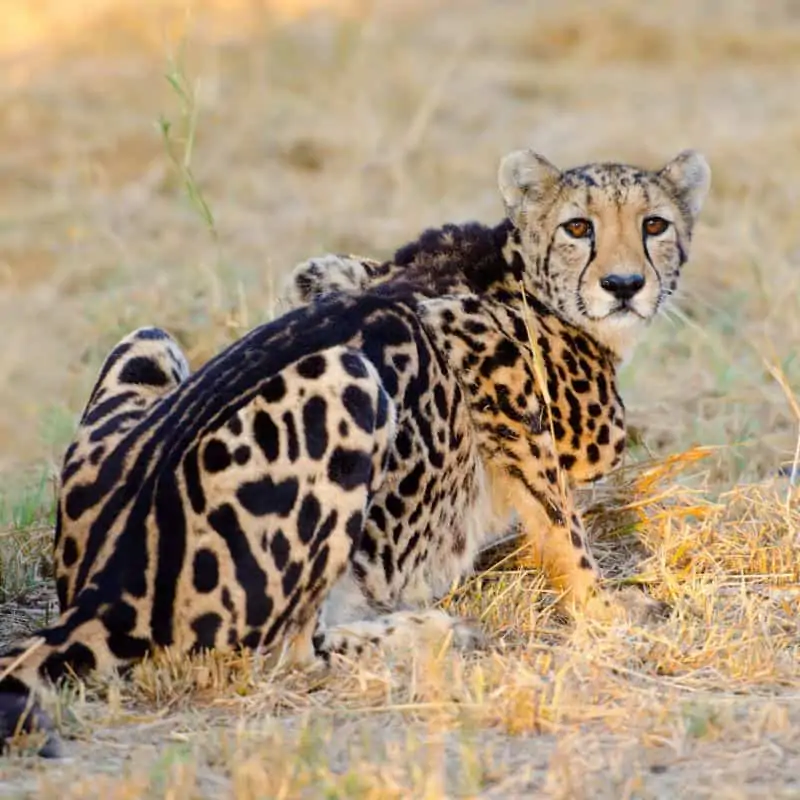
2. King is more of a nickname
King cheetahs were once known as Cooper’s cheetahs. They also bore the scientific name Acinonyx rex. Locals call them nsuifisi.
This was when everyone believed king cheetahs were an entirely new species. In 1939, it was established that king cheetahs were just color morphs and should be relegated back to their original name.
These days, king cheetahs are known scientifically as Acinonyx jubatus. Or cheetahs. Just plain old cheetahs with the word “king” attached to their names.
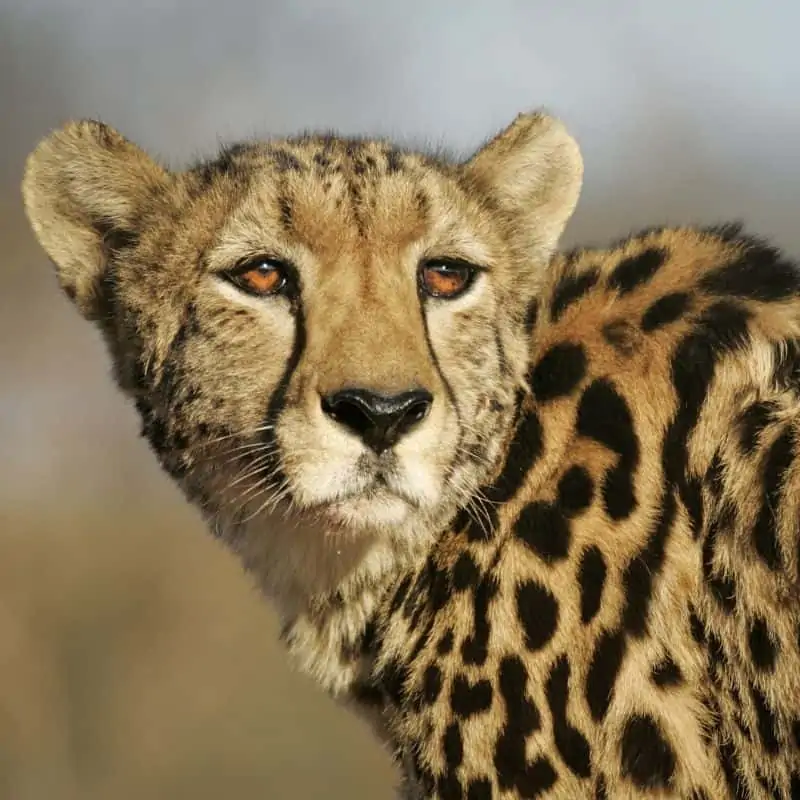
3. King cheetahs aren’t hybrids
Another popular theory back then was that king cheetahs were hybrids. They were once thought to be half cheetah and half jaguar due to their unusual fur markings.
This notion was squashed eventually when it was found out that king cheetahs were just color morphs.
And if being called a hybrid isn’t degrading enough, king cheetahs were once thought to be a cross between a cheetah and a hyena.
Which is what the word nsui-fisi directly translates to. Yes, that’s the word the locals call them once again.
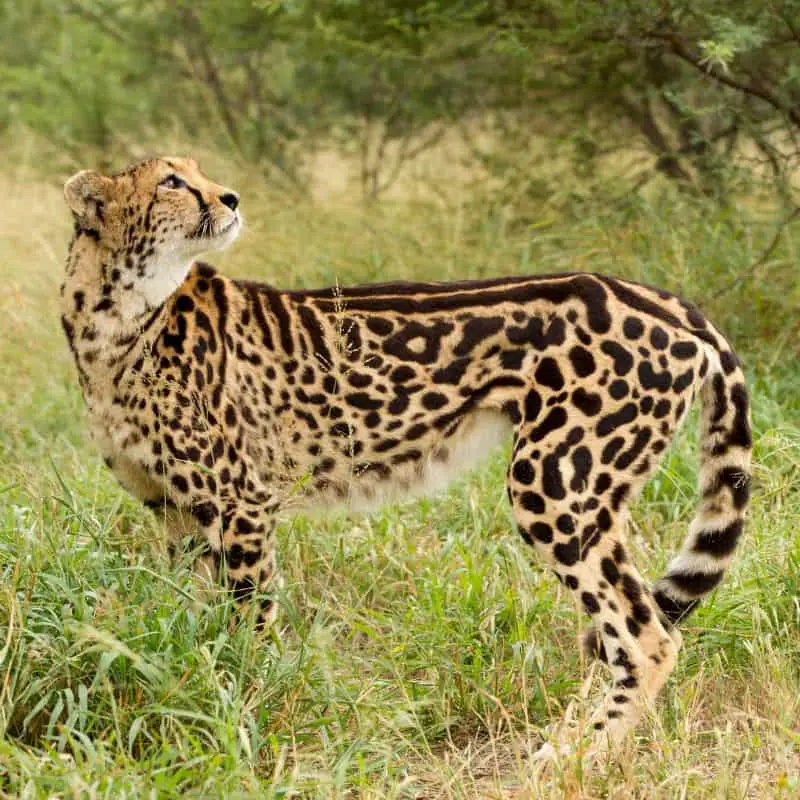
4. King cheetahs are the X-Men of the big cat world
King cheetahs are mutants. They may not shoot laser beams from their eyes or run faster than the average cheetah, but they are visually different. Sometimes, that’s enough to make people sit up and take notice.
The good thing is that, despite representing a tiny percentage of the whole cheetah population in the world, king cheetahs are raising awareness that far exceeds their meager numbers.
That’s one superpower worth being proud of.
5. It takes two to tango and make a king
King cheetahs don’t just appear at random. To produce a king cheetah cub, both parents must carry the recessive gene resulting in the unique color and pattern.
Inbreeding usually takes place to produce king cheetahs, which results in additional health problems and is one of the contributing factors to these animals’ decreasing numbers.
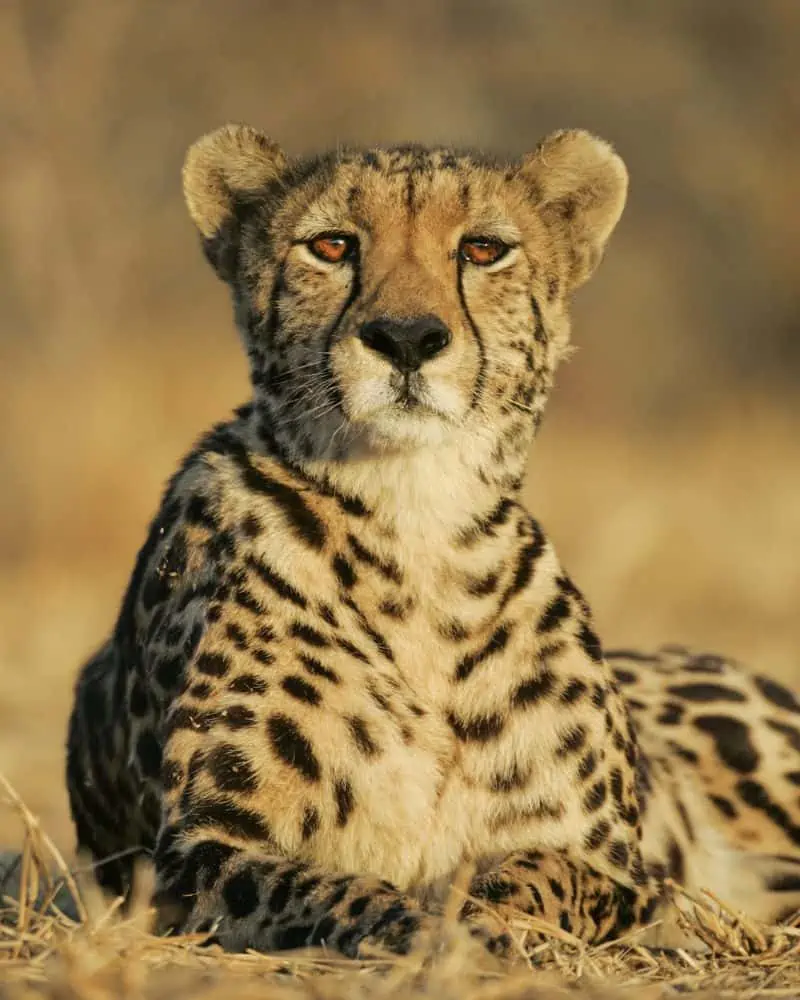
6. It’s been a long time since we last saw one in the wild
36 years to be exact. The last known sighting of a wild king cheetah was back in 1986.
Your best chance of seeing a king cheetah is to visit one of the few cheetah centers that house these animals.
Virginia Safari Park in the US, and the Hoedspruit Endangered Species Centre in South Africa, are some of the few places where you can catch a glimpse of a King cheetah for yourself.
7. There are more King cheetahs in captivity
Today only 10 to 12 king cheetahs are believed to exist in the wild. And that number is an assumption based on the potential survival and procreation of living specimens found in the wild before, as they have not been seen in the wild for over 30 years.
It is improbable for a cheetah with the king cheetah gene to find another with the same genetic makeup to mate with. Remember, you need two animals with the recessive gene to produce a king cheetah cub.
In captivity, however, the number of king cheetahs produced is increasing. This is due to selective breeding to ensure cats bearing the gene are paired correctly.
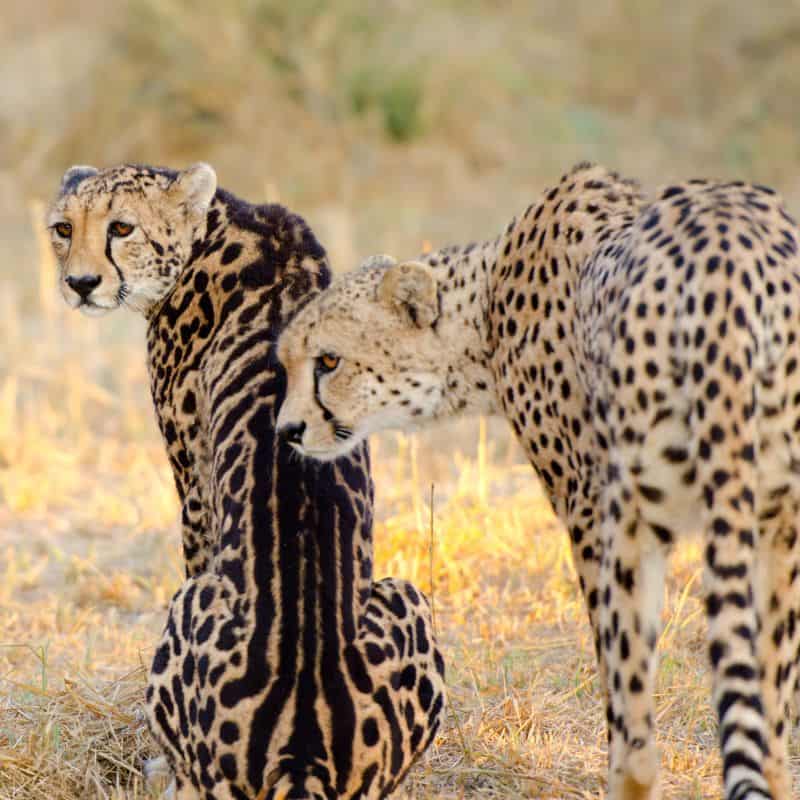
8. Splotchy, not spotty fur pattern
You’ll know you’re looking at a king cheetah when you see one. The dead giveaway is the three solid stripes originating from the neck to the base of the tail.
If you take a closer look, you’ll see that instead of well-defined spots, king cheetahs sport splotchy fur markings that make them appear darker.
9. They’re not the rarest cheetah
Although people tend to believe that king cheetahs are the rarest cheetahs worldwide, the numbers don’t necessarily support that idea.
As a mutation, they are extremely rare. But if you consider that they still belong to the general population of Southeast African cheetahs, they still have a good fighting chance of survival.
On the other hand, the title of “rarest cheetah,” with a more uphill battle, is the Asiatic cheetah which only has 12 known individuals left in the wild.
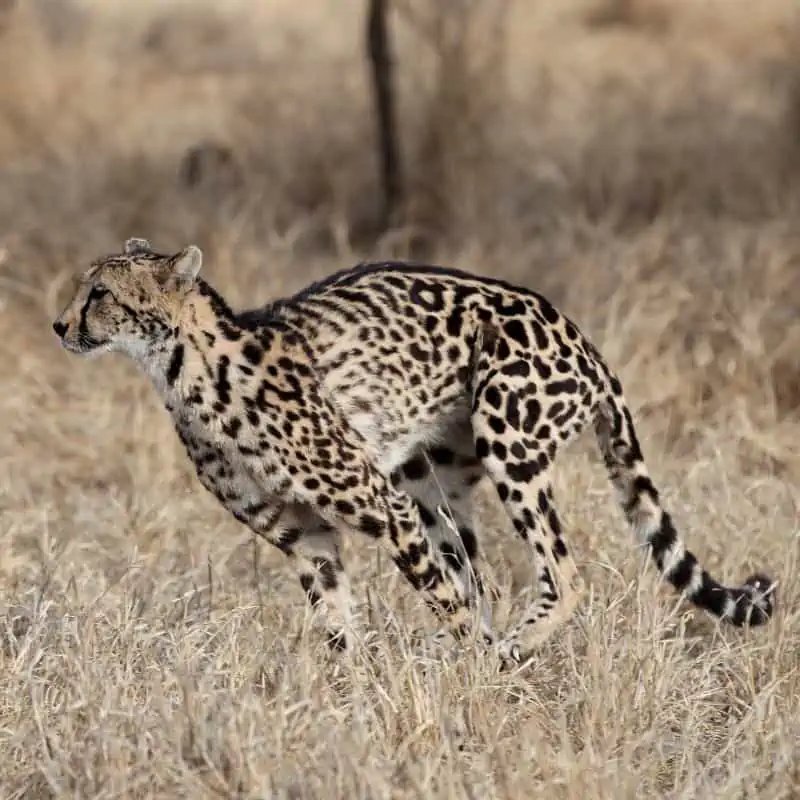
10. Humans are King cheetahs’ ally and foe in survival
Humans are to blame for the massive decline in the cheetah population worldwide. But it’s not too late.
Active steps are currently being taken to ensure the cheetah’s (kings included) survival continues.
Protected sanctuaries and breeding programs are slowly but surely bringing these magnificent creatures’ population numbers back up.
Final thoughts on the King cheetah
Apart from their unusual markings, king cheetahs aren’t any more special than regular cheetahs. Their perceived value is only based on the rarity of their fur pattern appearing in the wild.
Still, the king cheetah is a unique creature that has done an excellent job at raising awareness of the plight of the cheetah.
As an ambassador, they’re doing their part to help save cheetahs in general from the verge of extinction.
The interest they generate thanks to their inherent beauty is priceless.
